What is different from hi-speed jigging?
The conventional style of hi-speed jigging is not good?
Nothing is wrong with hi-speed jigging. It’s an exciting game and it does work very well in some conditions.
When I first started jigging, I was doing hi-speed jigging. I caught several amberjacks and tunas. The sudden impact of bite was such an adrenaline rush, especially after a long, hard, empty efforts of reeling and jerking. But I didn’t know there were much tactics. I didn’t know what was working, what was not working, or what I should change. All I could do is to believe, have faith in what I was doing, and just keep working hard. I didn’t feel my arms at the end of the day.
Even though the reward felt big, I was at the breaking point to give it up when I met Slow Pitch Jigging.
There’s no all-mighty method that works all the time. Fast or slow. But I think understanding hi-speed jigging in comparison with slow-pitch jigging really helps to bring your understanding and awareness to the game. So let’s talk about the history of jigging.
Why jigging came to be this way?
So the jigging has been a heavy-tackle, hard-working, muscle-breaking sport.
If you look at it in the evolution of fishing, there were reasons why it had to be this way.
1. THE LINE
There were only Nylon mono-filament and Fluorocarbon fishing lines when jigging was born. These lines are thick in diameter. And for the strength to catch the kind of fish you target with this method, it had to be really thick. 50lb Nylon line’s diameter is about 0.74mm, while PE line is about 0.41mm thick for the same strength. Because of its thickness, Monofilament and FC line catch more water, creating a lot of line slack between you and the jig.
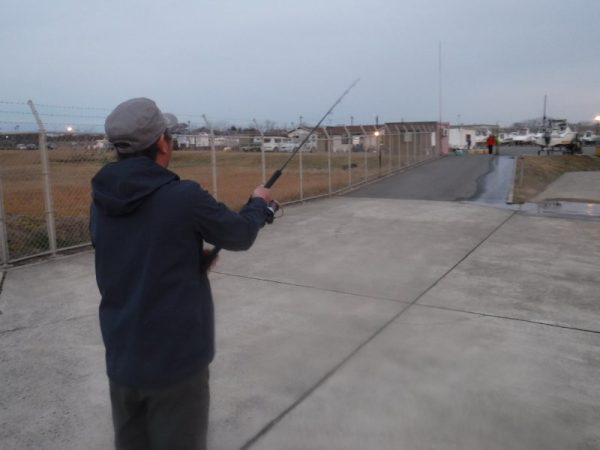
Suppose you and your friend are 100m apart, with a line in your hands. And you try to pull the line to move your friend on the other end. High wind is swinging the line between you two. Your friend can feel that you are trying move the line? Very little you can feel.
This is what you get when the heavy line catches the water before reaching the bottom.Plus, what makes it even more difficult is that these lines stretch to tensions. Monofilament stretches 20% to 45% before breaking, FC stretches 17% to 37%, while PE only stretches 4%. So if you are jigging with mono or FC, the line stretches and absorbs all your actions.
As a result, you need to jerk the rod big and strong, and keep reeling fast, fast, fast, just to move the jig.
2. THE BOAT
Most jigging boats were free-drifting back then. This creates the same problem of the line slack as #1. The best way to do jigging is that the jig goes straight down and you stay vertical. It means you are linked with the jig directly with a straight line. This way you have a very good control over your jig.
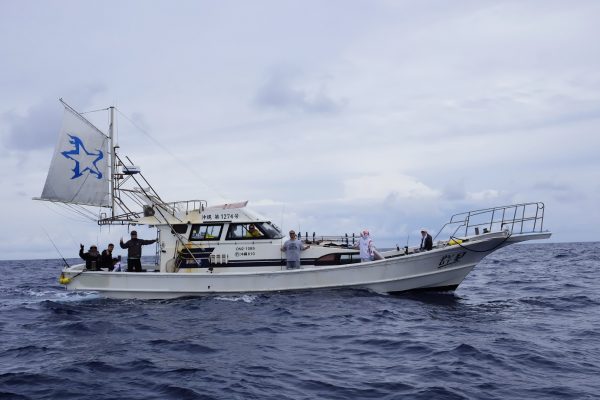
In order to maintain such vertical alignment in currents and winds, the jigging boats in Japan now have the spanker sail or at least sea-anchors. Spanker is the aft sail that keeps the boat pointing toward the wind. With an occasional little forward throttle, the captain can cut the influence of the wind and let the boat drift with the current. It keeps you vertical because the jig is moving with the current. Now most Japanese jigging boats have this sail and the captain can actively control the drift to keep you vertical. Sea-anchor is not a controlled drift. The parachute can put the brake on the wind pushing the boat. It’s better than free-drifting, and it works fine when the wind is mild and the current is mild.
See more detail
>> Boating to stay vertical
In the old days, jigging was done in the free-drifting boat. You are being pushed away from your jig constantly. You get a lot of line slack in the water. Sometimes your jig can’t reach the bottom. What does that mean? The water pushing your line away from you is greater than the gravity pulling down the jig weight. That is a lot of line slack. That’s why you constantly keep reeling just to take out the line slack.
3. ANGLER’S ASSUMPTIONS
When the jigging came out on the fishing scene, everyone doubted how the fish could possibly bite on the chunk of metal. So it’s in our head that we should move it fast fast fast so that the fish would not have time to examine what they are biting on. Only now we are understanding that it’s mainly the hydrodynamic vibrations of the motions that the fish react to. And the shape of the jig has been refined and modeled in different styles that they make all kinds of actions. Now some even say “Don’t try to move the jig. Let the jig do the job.”
Learn from the history
These are the reasons why the jigging has developed toward faster motions and heavier tackles. Jigging was done around 50 meters. 60 meter was considered “deep”.
Then the revolution came. PE line. And then came the idea of boating to stay vertical.
Slow-Pitch Jigging came out of this line of evolution. With PE line and staying vertical, we didn’t have to keep reeling so hard any more. Then, maybe, we should switch from spinning tackle to overhead tackle. How about letting the jig fall, rather than only uplifting? And how about going deeper and using lighter line and lighter hooks? And so on and on.
Sato Sensei really refined the setup and actions in every detail such as knots and hook setting, to maximize the jigging potentials.
I think knowing the history helps you understand deeper about how to set up and use your tackle.
Hope the information helps you! Good luck!
Related Posts
12 Comments
Leave a Reply Cancel reply
Categories
- 1. SPJ (57)
- 1-1. Principles (9)
- 1-2. Techniques (11)
- 1-3. Setup (17)
- 1-4. FAQ (19)
- 1-5. Tackles (3)
- 1-6. Video Gallery (2)
- 2. Other Offshore Games (5)
- 3. Fishing Report (105)
- 3-1. Totos (25)
- 3-2. Readers (72)
- 4. Fish Cooking (19)
- 4-1. Iki-Jime (3)
- 4-2. The Art of Sashimi (5)
- 4-3. Recipe (7)
- 4-4. Seasoning (3)
- 5. Fishing Charter (6)
- Fish (12)

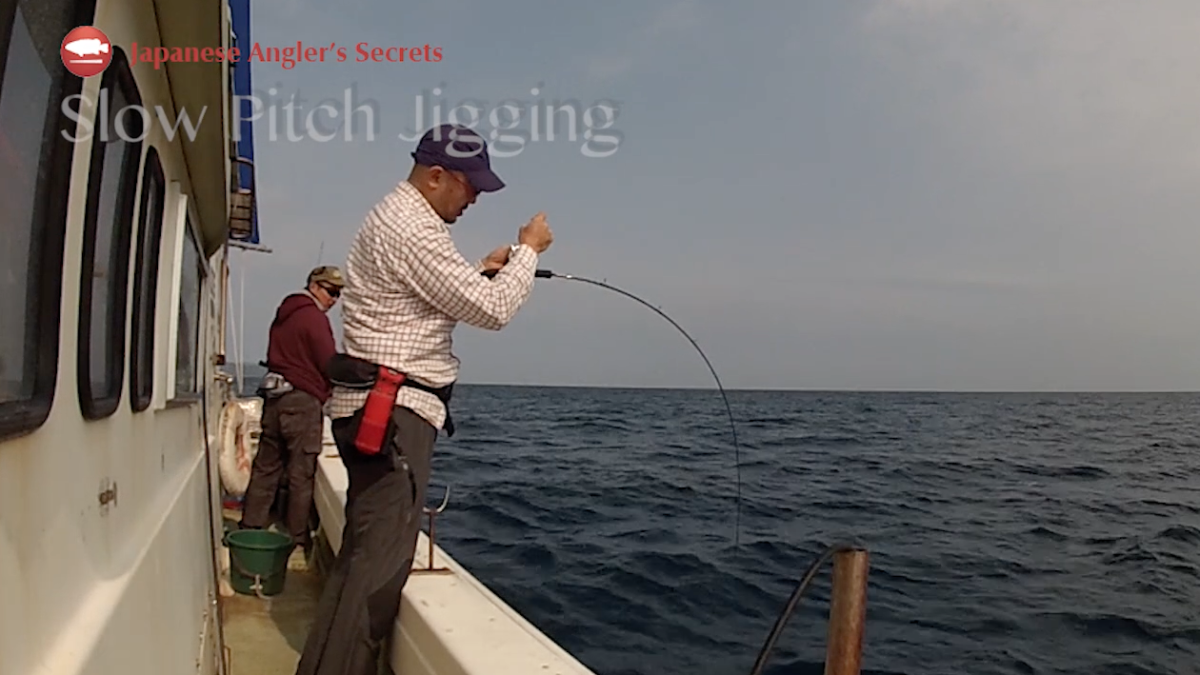

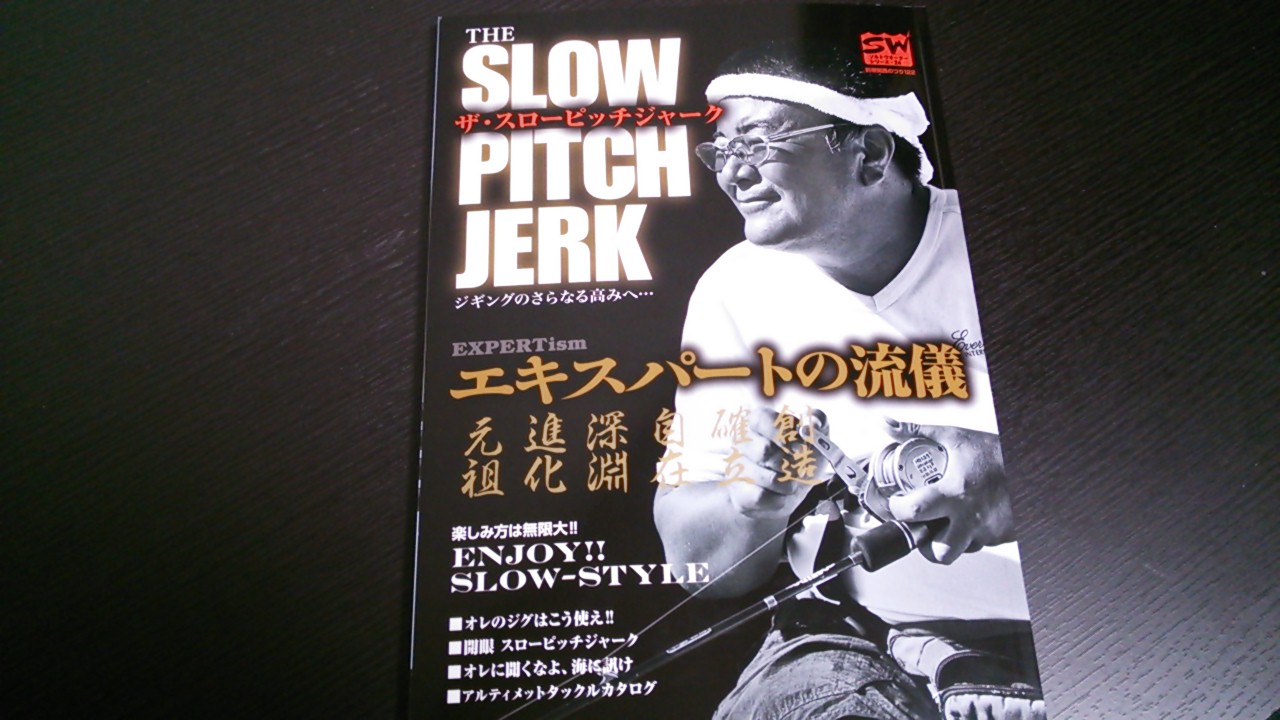
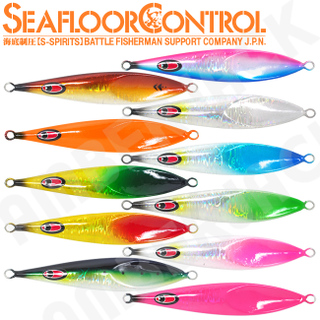
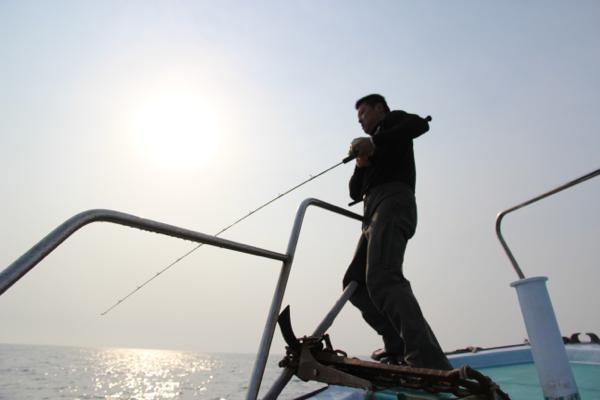
Very nice write up!
I’m, for one, don’t do speed jigging; It’ s just too tiring. Light tackle and a nice slow-moderate speed jigging is the way to go.
Cheers,
Thanks Kitidas. Totally agreed.
hi totos,
thank you for the nice writing, in english especially…. your writing is very informative, make me wonder if its doable in my hometown later, now i am living in nagoya, aichi for study….
actually i am from southeast asia, bali island to be exact, where we are doing the HEAVY jigging… 😀
actually the only place we do that heavy jigging (up to 800-1000 gram jig) is only few limited place, like badung strait, lombok strait, or bali strait where the strait is passing the water from indian ocean to south china sea and pacific because the current is ripping like hell…. hahahaaa…. i hope i don’t too much exaggerating it…..
but just to give you an idea, sometime the current is ripping so hard that in 50 meter depth, a 500 gram jig could not touch the bottom…. but of course there’s a day when current is good, 300 gram jig will touch 100 meter depth, but that happened only around 4 days in a month….
so what should we do for the other 26 days…??? without any choice left, decided we use heavier jig…. hahahahaa… and shorter rod to ease up…. but still it much of a sport… 😀
another problem in our deep water is many times there are 2 or more current, upper and bottom part of the ocean, and having different direction, to make matter worse…. sometimes completely opposite… plus of course the presence of wind with strong gust….
actually we almost always have our engine ON to compensate the drift, as the same what spanker is doing… so in addition we need heavy jig to keep the line as straight as possible, fall down as soon as possible, and to give the feeling if the jig already touch bottom, due to the presence of double current….
i had tried a 300 gram drift type jig before, it was never caught bottom, maybe i should made heavier one, hahahahaa….
another factor is the absence of good PE line, in my home town, the japanese PE line price is crazy expensive compared to japan. the new generation PE line like shimano jigger tuned unfortunately is not yet sold in bali….
but anyway, i will try slow jigging in the future, just starting to collecting tackle and jig, i hope i can try as soon as possible…. since in bali island also exist a sea where the current is slow, where 40 gram jig can touch 100 meter bottom…. so very high chance for slow jigging….
thank you for your writing… 🙂
Hi Mahaputra.
Thank you very much for your comments. i understand your concerns about strong currents and complex currents.
Slow pitch jigging only works maybe up to 2 knots of currents. 4 knots would make it almost impossible. Maybe long-fall with 600g Gawky or heavier would be the only option.
I have heard of Bali water for its currents. So rich but so tough a field.
I hope you are able to get some slow pitch tackle while you are in Japan. And enjoy your time here!
I ask me what is important, when we practice a technique of fishing….. Result of course. Extra fast jerking not only satisfies me, but allows me to catch huge numbers of fish, much more than many other vertical fishing techniques which use with the usual fussiness that distinguishes me. There’s nothing of new in slow pitching. It ‘s just an attempt to sell “lead” to final buyers, even if it goes well in fishing. It has reason to be just as fast jerking. or slow…..It always depend on you…..
Ah, video is mine. I was rod and lure designer for Shimano Europe for several years. I contributed to development of jigging not only in Italy but also in Europe and all people I am in contact respect me and my knowledge in fishing….You don’t know me and it’s fun to red what you write just because I know that business is business…..good luck but next time use your own video to talk bad about a fishing tech and try to not use the works of others…..
Hi Riccardo.
Thank you very much for sharing your thoughts. Your points are well taken. I apologize if I offended you. With all due respect, I have corrected the article. Thank you for correcting the course of my writing.
Regards,
Totos
You didn’t offend me. I understood your point of view but when you talk bad about something I think it should be better to use your own videos. Sometimes it happens to not be agree with other anglers, there’s no problem. Fishing is a thing you do to be satisfied…and everyone have to do it in the way he prefers.
I have a lot of cooperations with fishing magazines and sometimes it happened a my colleague told bad about fishing tech using pictures of other persons and this was not appreciated.
Concerning slow pitch I can tell you an angler have to know deeply every type of jerking because fishes don’t like always the same speed or the same jig/color. Then, often you don’t have the same conditions to do the jerk type you want and you have to adapt your fishing style to the weather conditions.
Here in the med the first school of amberjacks loved fast jerking. Then they started to understand that jig was dangerous for them and jigging started to be not so good like the past. Today we have new school of fishes, they started again to bite the jig but I saw there’s no a preferred jigging style. You can catch fishes with a wide jerking style, from ultra fast jerking to slow pitch (slow pitch is great with a variety of bottom fishes and it can be considered as an alternative to other vertical fishing tech like inchiku. This is my opinion. Regards
Thank you Riccardo for sharing your ideas in such depth.
I totally agree with you. It was never my intension to talk bad about other people. But I was trying too hard to make my points and saying things that were totally unnecessary. That’s why I changed it according to your advice. I thank you for pointing that out.
I can’t agree more with you on jigging styles as well. The ocean is different. The current changes every hour. The fish acts different. There is no almighty fishing style that works for everything. Just like you said. I don’t even think slow pitch jigging is a new thing. I think it’s a structure that anglers understand the vertical game and build their tactics in. Categorizing high pitch, slow pitch, and long fall is, I think, such a brilliant idea. But being so precise and finesse about the setup and application is such a Japanese thing, I think. Some people enjoy it. Some don’t. That’s OK.
It’s been a year since I started this site. I’m very happy with the fact that a lot of people have found that there are things that they can learn from the slow pitch principles no matter what fishing style they are on.
You should come here in Italy where Jigging came and went with a storm’speed…..I’m sure slow pitch is great with a lot of bottom fishes we have like dentex, groupers, porgies, etc…
I’m jigging lover, I fished everywhere, also in Japan with my Shimano old colleagues. I saw how they fish: in a completely different way from here. They come on the spot and stay “in hovering” with the boat on the fishing area fishing up to 100 mt with light jigs (80-100 grams), also with good stream.
I’m not an expert in slow pitching but I can say when you fish very slow often a light lure goes better than an heavier, so I try to use always light lure as possible (talking about kabura/inchiku/tenya but also slow pitch).
Here often you come on the spot, switch off the engines and start the fishing action while the boat is drifting. and this is wrong in my opinion.
Japanese also have 5-10 rods each ready, all with a different lure solution, and they are always very well organized. They don’t loose time changing leader or lures and they are always focused on the fishing action.
Just a reflection: Shimano is probably the biggest fishing Company in the World. Unfortunately in Europe, Shimano Managers think only looking to the profit and earnings and actually jigging is not so convenient. It’s a shame, because Shimano spreads jigging all over the World, it’s a Japanese Company and it has the duty to believe that jigging is a respectable fishing tech, always… They stopped all development about jigging and reduces every years jigging tackle on catalog….
Thank you Riccard for sharing your abundant experience with jigging.
Yes, free drifting is hard to do vertical games. That is why almost all the vertical fishing boats in Japan have spankers now. Sea-anchor (drogue) is the least requirement to stay vertical. We need some way to cut the wind influence.
http://anglers-secrets.com/v2020/faq-why-does-it-have-to-be-so-vertical-for-slow-pitch-jigging/
I understand how frustrated you are with Shimano directions. As far as I can see in Japan, Shimano has been very quite in the jigging scene. Slow pitch jigging took the popularity and Shimano was not on it. But recently it’s clear that Shimano is moving toward that direction. The first sign was Ocea Jigger Limited, which is the specialized reel for slow pitch. Shimano staffs say this is an experiment. A test marketing. And now they are producing the high end slow pitch rod. Ocea Jigger Infiniti. Only one model, 3oz rod, has been released, but more to come to complete the lineup next year. I noticed they just had a contract with a slow pitch expert, Mr. Yamamoto, as their field tester too. So I can see Shimano is being very careful in exploring this field but moving forward. When they come back, they will come back strong, I’m sure. And I’m sure it will spread to the world sooner or later.
I really hope they come back on the jigging scene soon. No question that Slow Jerker is the best slow pitch rod on the present market. But Evergreen is just not eager about international market. We need new Shimano rods for people around the world to enjoy this game.
Unfortunately Shimano Japan is a “world-apart” from Shimano Europe. I hope slow pitching will revamp jigging movement in Europe but honestly I think that when Shimano Europe will decide to enter in this market probably this tech will be already over (considering what for a so big Company like Shimano Europe a convenient market means…).
And it will be a shame.
However I’m curious about slow pitching. I hope to have the chance to test deeply this tech. I also hope to give you a deep feedback about it…
Yawn!